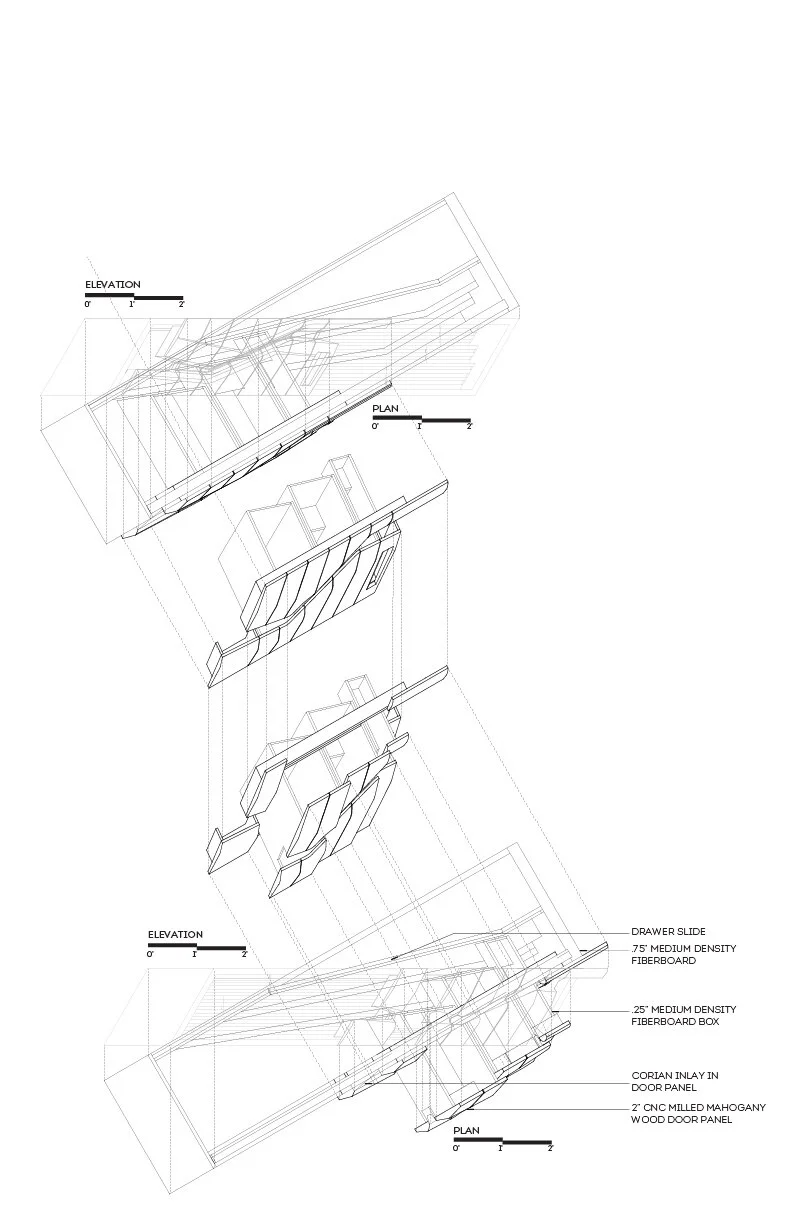The difference between something good and something great is attention to detail. To create something exceptional, your mindset must be relentlessly focused on the smallest detail. In a successful organization, no detail is too small to escape close attention. The purpose of detail in architecture is to connect different surfaces and materials together. It’s a bridge that can be flexible, making the surface free of rigidity. If the detail is an expression of construction truth, ignoring all the ornamentation, its efficiency and performance are the most important factors. The evolved detail accomplishes all of that and yet is not demanding to be noticed. The evolved detail just requires a small nudge for it to be in action. It is a detail of logic and intimacy, hidden behind its heavy clothes. It functionally slips between being a cabinet and a drawer unit. The evolved detail is mainly for joinery but it articulates the amount of intricacy put into it. It is minimal and hidden by its envelope, dominant, and still continues to transition you between worlds. It breaks the typology of furniture being efficient and aesthetic.
This detail is furniture between a cabinet and a drawer unit. It requires a pull on the door for the drawers to open. It has a very simple mechanism for it to work while it looks complex. The drawers just slide on a rail for it to open. The idea of using wood was to highlight the natural grain and shift the focus of attention from the mechanism to the materiality. Ideally, this piece would be in a wall and flushed where only the front door panel would be visible and that would create a completely different reading of this furniture piece.
In collaboration with Kumaran Parthiban and Caleb Roberts.











